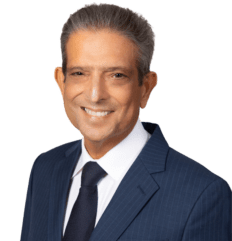Understanding Multidistrict Litigation
If a defective product, dangerous drug, or another issue harmed you or a loved one in the same way it injured many people across the country, you may have heard the term MDL or multidistrict litigation.
MDLs allow lawsuits from multiple plaintiffs against one or more defendants involving common questions of fact. A single federal court consolidates the cases for pre-trial proceedings. These legal proceedings help federal courts efficiently manage multiple related cases in different parts of the country.
At Cory Watson Attorneys, our experienced personal injury lawyers in Birmingham represent clients across the country harmed by others' negligence, including in cases that become part of multidistrict litigation.
Stephen Hunt Jr. and Jon C. Conlin serve as co-chairs of our mass tort department. Both have earned recognition from Super Lawyers, Best Lawyers in America, the National Trial Lawyers, and Martindale-Hubbell. Each has pursued numerous MDLs against major corporations and recovered millions of dollars for thousands of our clients.
Here, we explain MDLs, how they work, and the potential benefits for plaintiffs of consolidating lawsuits into an MDL.
How MDLs Work
When multiple lawsuits are filed in federal courts across the U.S. involving similar allegations against the same defendant(s), the cases may be consolidated into multidistrict litigation to improve efficiency and consistency. A Judicial Panel on Multidistrict Litigation (JPML) consisting seven federal judges makes the decision whether to transfer similar cases into an MDL.
Common types of lawsuits that may be consolidated into MDLs include:
- Defective products, such as faulty medical devices or dangerous vehicle components
- Dangerous drugs that cause unexpected side effects
- Other product liability matters involving defects that injured many consumers
- Airplane crashes or other transportation disasters
- Securities fraud
- Antitrust violations
- Other cases involving common questions of fact that are pending in different federal district courts
An MDL streamlines the legal process, avoids duplication of discovery (the fact-finding phase), prevents inconsistent pretrial rulings, and conserves resources. Consolidating cases into an MDL can also lead to quicker resolutions than if each case proceeded individually.
A recent example of a high-profile MDL involves the weedkiller Roundup. Plaintiffs filed thousands of Roundup lawsuits against Bayer AG and its Monsanto subsidiary, alleging that Roundup's active ingredient, glyphosate, causes non-Hodgkin's lymphoma and that the companies failed to warn consumers about the cancer risk.
An MDL in the Northern District of California, overseen by U.S. District Judge Vince Chhabria, consolidated over 3,000 lawsuits nationwide. Bayer later agreed to pay more than $10 Billion to settle most of the claims.
MDLs vs. Class Action Lawsuits
MDLs and class action lawsuits are different types of mass tort procedures. A mass tort is a type of civil action involving numerous plaintiffs who have suffered similar harm or injuries caused by the defendant’s actions, typically a corporation. Both MDLs and class actions involve multiple plaintiffs bringing similar claims against the same defendant(s). However, there are important differences between these two legal mechanisms.
In multidistrict litigation, each plaintiff files their own lawsuit. These lawsuits might be grouped together so that one judge can manage them, but each case is still separate. This is because each case in an MDL may have a different type or severity of an injury. This means that each person has more control over their own case and can make their own decisions about settling or going to trial.
In a class action, the plaintiffs are represented by one or a few people called "class representatives." The class representatives file a single lawsuit on behalf of the entire group. Class actions have commonality of damages so that they can be easily measured and attributed to the members of a class. Normally, class actions do not involve financial injuries rather than personal injuries. Surprise overdraft fees charged by banking institutions is a good example. If the case settles or goes to trial, the result applies to everyone in the group unless they opt out of the class.
How the JPML Works
MDLs are created by the Judicial Panel on Multidistrict Litigation or JPML. The JPML is a panel of seven federal appellate and district court judges, all from different circuits. The panel is assigned the specific task of deciding whether lawsuits filed in different courts are similar enough to go through the preliminary steps of civil litigation together.

If the JPML decides that multiple lawsuits share questions of fact and common defendants, the panel can transfer the cases to a single court for coordinated pretrial proceedings.
For example, the common questions of fact in most pharmaceutical lawsuits are:
- Whether a scientific link exists between the drug and the injury and
- Whether the pharmaceutical manufacturer knew of the link but failed to warn doctors and patients.
The JPML also assigns one federal judge to oversee an MDL. Factors considered in selecting the MDL judge include their experience, the convenience of the parties and witnesses, and the location of relevant evidence.
The MDL judge presides over all pretrial matters, including:
- Discovering and gathering evidence
- Overseeing depositions of parties, witnesses, and experts
- Deciding on the admissibility of evidence
- Ruling on pretrial motions
- Potentially encouraging settlement negotiations between the parties
If any of the lawsuits don’t resolve during the pretrial MDL proceedings, the MDL judge will send them back to the federal district courts where they were originally filed for individual trials. However, most cases consolidate into an MDL settlement before going to trial.
MDL Organization for Plaintiffs
One of the first things that an MDL court does is appoint a leadership structure for the plaintiffs. This is typically called the Plaintiffs' Steering Committee or PSC.
The PSC consists of a small group of lawyers—typically, who represent different or multiple plaintiffs. The PSC's role in the litigation is to effectively and efficiently represent the common interests of all MDL plaintiffs.
MDL Discovery
One of the first stages of civil litigation is discovery. Discovery is when both sides of a lawsuit gather facts and develop evidence. In an MDL involving a prescription drug, this involves gathering the documents and taking depositions of the pharmaceutical company's employees and the injured consumers.
A deposition is when a person is questioned under oath about their knowledge related to the matters in a lawsuit. In an MDL, the Plaintiffs can depose a company employee, and that deposition can be used in every individual case rather than deposing that person multiple times. The same logic holds for obtaining documents and expert medical testimony as well.
Normally, drug manufacturers produce millions of pages of documents in a complex pharmaceutical case. These documents must be reviewed to determine if they are relevant or will help the plaintiffs prove their case.
In an MDL, members of the PSC and other plaintiff law firms band together to review these documents collectively. This saves an enormous amount of time that would typically be spent by each plaintiff's lawyer with a case.
Test Cases or Bellwether Trials
Once the discovery phase is finished, the MDL court can decide to select one or more cases as bellwether trials.
These cases are the first to proceed to trial. Bellwether trials offer a snapshot or preview of how similar cases may end up. They also test the strength of the evidence, witness and expert testimony, and arguments before an actual jury. After the bellwether trials, the remaining cases either settle or are transferred to their home states to await their individual trials.
Potential Benefits of MDLs for Plaintiffs

There are several key potential advantages for plaintiffs of having their lawsuits consolidated into multidistrict litigation:
- Access to justice. Individually litigating a case against a large corporation can be extremely expensive and time-consuming. MDLs level the playing field by allowing plaintiffs to pool their resources.
- Consistency in rulings. With a single judge overseeing the pretrial process, there is less risk of conflicting decisions on key issues that could unfairly impact some plaintiffs if their cases were being handled separately by different judges.
- Improved efficiency. Coordinating discovery and other pretrial matters helps the legal process move faster than individual suits. The MDL judge will schedule discovery requests, depositions, motions, and so on.
- Increased settlement leverage. With many similar cases consolidated, the potential liability exposure may drive defendants to consider a global settlement. Plaintiffs may have more negotiating power than if they sued individually.
- Lower litigation costs. Plaintiffs can reduce their individual legal expenses by sharing the costs of building their case, such as through joint discovery. Plaintiffs' attorneys often work together on an MDL steering committee.
However, there are also some potential drawbacks of MDLs for plaintiffs to be aware of. Resolving an MDL can take several years, so plaintiffs may need to be patient. There is also a risk that if an MDL settles, the amount an individual plaintiff receives may be less than if their case went to trial. An experienced attorney can advise on whether joining an MDL or proceeding individually is the best option based on the specific details of your case.
What to Do if You Have a Potential MDL Claim
If you believe you have a claim that could become part of multidistrict litigation, speak with a knowledgeable Birmingham mass tort lawyer. Mass tort and MDL cases involve complex legal procedures, so working with a lawyer who understands the process and has experience litigating these types of claims is essential.
At Cory Watson Attorneys, we have a proven track record of successfully representing plaintiffs in MDLs and other product liability and personal injury cases. We offer free consultations to discuss your situation and advise you of your legal rights and options.
Some factors to consider when deciding whether to move forward with an individual lawsuit or join an existing MDL include:
- The nature and severity of your injuries
- Whether others have been similarly harmed by the same product or defendant
- The strength of the evidence linking your injuries to the defendant's actions
- Your goals for pursuing legal action (seeking compensation, holding defendants accountable, etc.)
- The potential length and costs of the legal process
Our attorneys can review your case, answer your questions, and give you an honest assessment of whether you may have a viable claim. We work on a contingency fee basis, meaning you won't owe any upfront costs or legal fees unless we secure compensation.
Contact a Mass Tort Lawyer at Cory Watson Attorneys Today

If you've been injured or lost a loved one because of someone else's negligence, act quickly to protect your legal rights before time limits called statutes of limitations expire. Seeking prompt legal advice can help ensure you don't miss any key deadlines for filing a claim.
Cory Watson Attorneys is here to help injury victims nationwide seek the justice and compensation they deserve. Contact us today at (205) 328-2200 or through our online form for a free, no-obligation case evaluation with our legal team.
